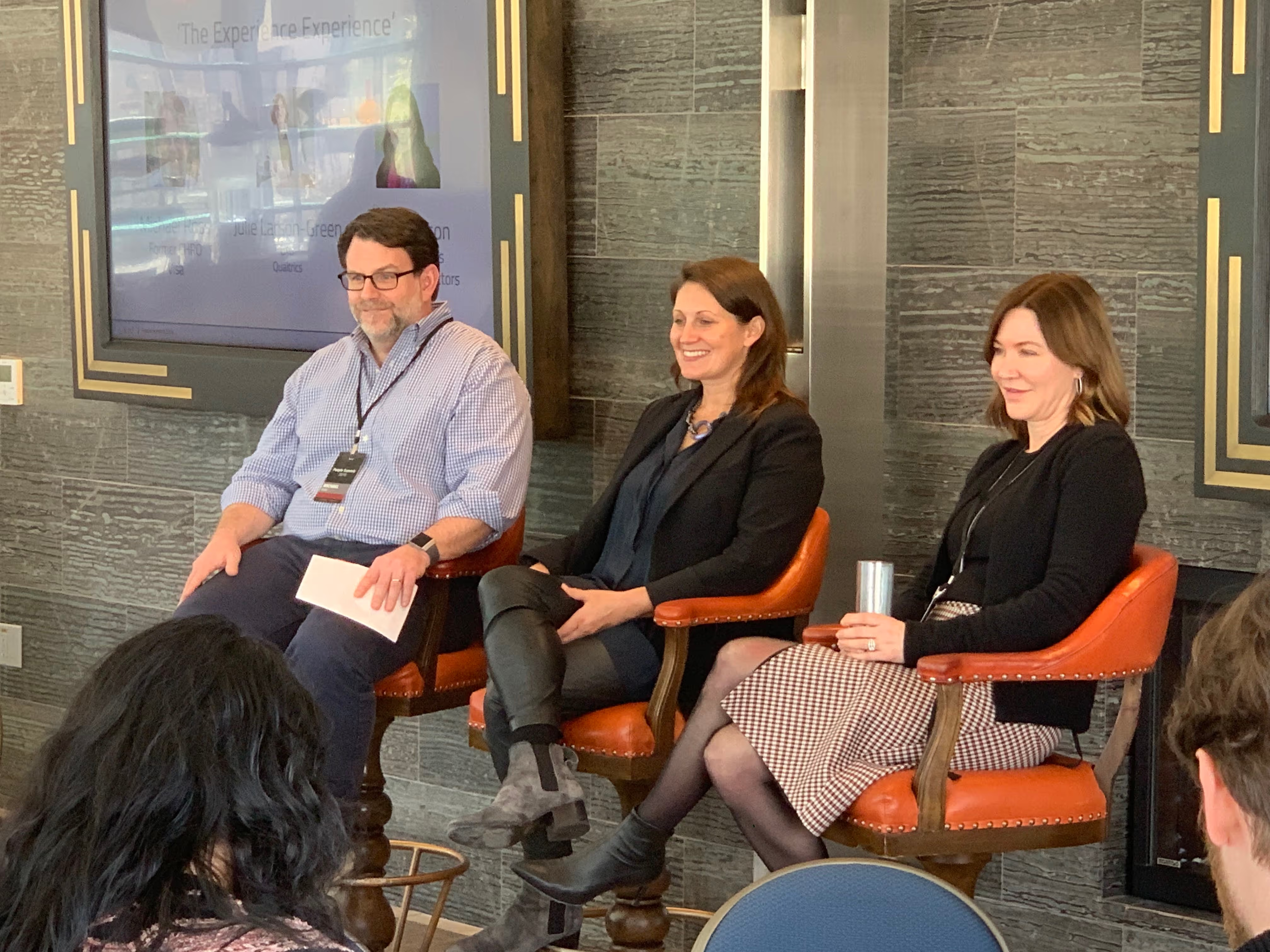Experience Management: A Modern Take on Employee Engagement

Customers have grown accustomed to everyday digital engagements. However, when those customers step into the office, they endure antiquated technology. This makes relating employee experiences and satisfaction to customer service important because after all, happy employees correlate to happy customers. Today’s Chief Experience Officer—or CXO—is a relatively new, but much-needed role, that is tasked with exceeding employee’s digital experiences as a customer in their own office.
During our recent People Summit in San Francisco, the top minds in talent and HR were brought together to discuss strategies and techniques to improve employee engagement and overall wellbeing in the digital age. Michael Ross, Former CHRO Visa; Julie Larson-Green CXO Qualtrics; and Amy Wilson, SVP Products SAP SuccessFactors, discussed how enterprises and startups can succeed with experience management. Here are the top takeaways from their conversation:
Accelerating Experience Management
For too long, human resources’ solutions involved collecting employee data through outmoded documents, surveys, and databases. Back-end needs often take precedence over translating this HR data into tangible business results, ultimately hurting employee engagement. The HR industry is now much better equipped with AI, machine learning and conversational analysis tools that bring together operational and experience data to create a digital open door for employee engagement and feedback. Taking the time to design an HR toolset specific to your organization can help improve employee empowerment, eliminate biases and reduce turnover.
Before Rolling out New Programs…
CXO’s can leverage data to best assess what matters most to employees. By analyzing the types of activities employees enjoy or already participate in, CXO’s can make informed decisions around benefits and perks - from which there is a huge universe to choose from - that matter most to employees. Assessing the right touch points, analyzing data and connecting it directly to employee sentiment can help organizations optimize and ensure employees buy into the programs and improve company culture.
Not limited to total rewards, analyses that connect sentiment and operational data to help organizations better understand if their most important people are satisfied, and to get ahead of any higher performers that may be a flight risk.
Look at Experience Management Through a Wide Lens
“The role of the CXO is emerging. Data has historically been siloed to teams, but a person who can make decisions after seeing all data - from sales to the individual employee is rare.” – Julie Larson.
Improving customer experience involves having a better understanding of employee sentiment and a better solution to monitoring and responding to this. This will have a direct impact on customer satisfaction too as overall as brand perception is heavily affected by both customer service and corporate culture. Everything a company says, both internally and externally, must have employee buy-in to be truly successful.
Great companies aren't built alone.
Subscribe for tools, learnings, and updates from the Accel community.

.avif)